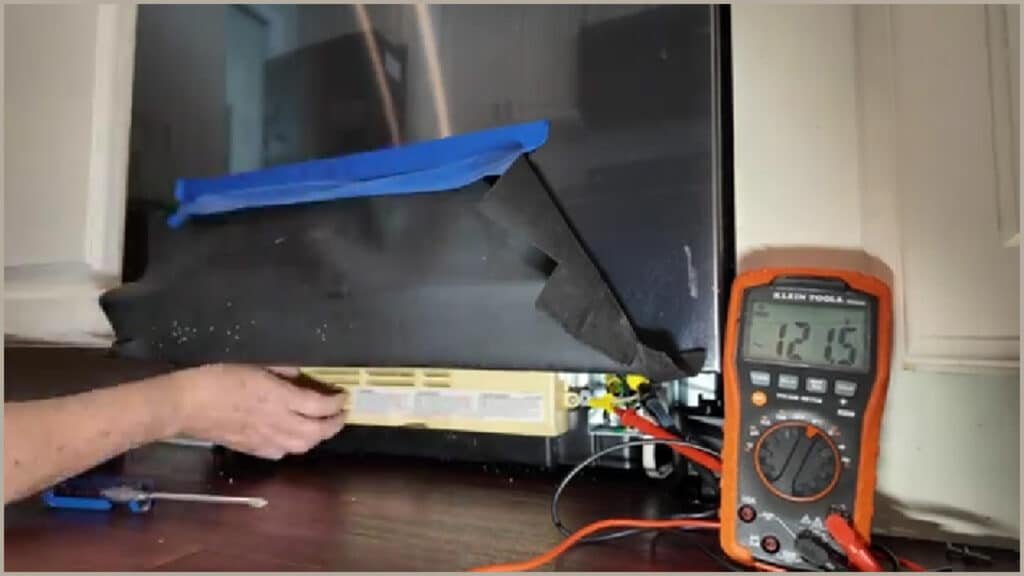If your Samsung dishwasher shows no power to the control panel, don’t panic. A few common reasons for this issue include a tripped circuit breaker, a blown fuse, or issues with the door latch. Each of these problems can be fixed with simple troubleshooting steps.
Start by checking your home’s electrical panel. If the circuit breaker is tripped, reset it to restore power. If that doesn’t work, inspect the fuse box next. If everything looks fine there, the door latch may be faulty or misaligned, preventing the control panel from receiving power.
By following these steps, you can determine the cause of your dishwasher’s lack of power and take action to get it running again. Understanding and addressing these issues can save you time and money, ensuring your appliance is back in working order quickly.

Table of Contents
Troubleshooting Basics for Power Issues
Before diving into repairs, check basic power connections. This will help you identify if the issue lies with the power source or the dishwasher itself.
Checking the Power Source and Outlet
Start by ensuring that the outlet your dishwasher is plugged into is working. You can do this by:
- Using a Multimeter: Plug it into the outlet to check for voltage. You should see around 120 volts.
- Testing with Another Device: Plug in a lamp or another appliance to see if it operates.
If the outlet has power, check your circuit breaker. A tripped breaker can cause loss of power. Look for breakers that are in the “off” position and reset them if necessary.
Inspecting the Power Cord and Plug
Next, examine the power cord and plug for any visible damage. Check for:
- Frayed Wires: Look for exposed copper wire or breaks in the insulation.
- Burn Marks or Odors: These can indicate overheating.
If you find any damage, avoid using the dishwasher until the cord is replaced. Also, ensure that the plug fits snugly in the outlet. A loose connection can cause power issues. If everything appears normal but the dishwasher does not power on, it may need professional attention.
Control Panel Problems
The control panel is crucial for operating your Samsung dishwasher. Knowing how it functions and common issues can help you troubleshoot effectively.
Understanding Control Panel Operation
The control panel is the main interface for your dishwasher. It receives inputs from buttons or touchscreen options you select. When you press a button, the panel sends signals to the dishwasher’s control board.
Key parts of the control panel include:
- Buttons: Used to start cycles or select options.
- Display: Shows cycle information and error codes.
- Control Board: The brain of the dishwasher that processes your commands.
When you encounter issues, it could be due to power problems, a malfunctioning control board, or faulty buttons. Understanding how these parts work together helps identify the cause of problems.
Common Control Panel Malfunctions
Several issues can prevent your control panel from functioning properly. Here are a few common problems:
- No Power: If the control panel doesn’t light up, check the power source. Ensure the dishwasher is plugged in and that your home circuit is working.
- Unresponsive Buttons: Sometimes, buttons may not respond due to dirt or damage. Clean the buttons gently and check for any physical obstructions.
- Error Codes: Your dishwasher might display error codes, which indicate specific problems. Refer to the user manual for details on what these codes mean.
If you experience these issues, troubleshooting the control panel is the first step before seeking professional help.
Circuit Breaker and House Wiring Checks
You need to check both the circuit breaker and the house wiring. These checks are important to ensure that power is reaching your Samsung dishwasher’s control panel.
Resetting the Circuit Breaker
First, locate your home’s circuit breaker panel. Look for a switch that is in the “off” position or not fully on. If you find one, flip it to the “off” position and then back to “on.”
Ensure that the breaker you reset corresponds to the kitchen or appliances. If the breaker trips again, there may be a larger issue. You can also check for other devices in the same circuit. If they work fine, it may point to the dishwasher as the problem.
Evaluating House Wiring Issues
Next, inspect the wiring leading to your dishwasher. Look for signs of damage, such as frayed wires or loose connections. These issues can prevent the control panel from receiving power.
Check all connections to ensure they are secure. If you are not comfortable doing this, it’s wise to call a professional electrician. They can use tools to test the power supply and identify any wiring errors that you might not see.
Samsung Dishwasher Error Codes
Samsung dishwashers show error codes to help you understand issues with your appliance. Knowing what these codes mean can save you time and effort when troubleshooting.
Interpreting Error Codes
Samsung dishwashers display various error codes, each indicating a specific problem. Here are some common error codes and their meanings:
- IE: Water inlet problem. This code appears if the water is not filling properly.
- OE: Drain issue. This indicates that the dishwasher can’t drain water.
- HE: Heating error. This shows that the heater is not functioning as it should.
- CE: Communication error. This code means there is a problem with the control board or connectors.
Refer to your user manual for a full list of codes and their meanings.
Error Code Troubleshooting Steps
When you see an error code, follow these troubleshooting steps:
- Check connections: Make sure the water supply and drain hoses are properly connected and not kinked.
- Inspect filters: Remove and clean filters to ensure proper water flow.
- Reset the dishwasher: Turn off the power for at least 5 minutes, then turn it back on.
- Check for blockages: Ensure the drain isn’t clogged with food particles or debris.
If the error persists after these steps, you may need to contact customer support or a technician for further assistance.
Internal Component Inspection
When your Samsung dishwasher shows no power to the control panel, it’s important to inspect the internal components. Focus on the control board and thermal fuse, as these are critical for operation.
Examining the Control Board
Start by ensuring the dishwasher is unplugged for safety. Remove the control panel carefully. Inspect the control board for any visible damage, such as burned areas or loose wires.
Look for signs of corrosion, which can disrupt electrical connections. Use a multimeter to check for continuity in the control board. If you find no continuity, it may need to be replaced.
Reassemble everything carefully, double-checking all connections before plugging in the dishwasher.
Testing the Thermal Fuse
Next, locate the thermal fuse, usually found near the control board or motor. Again, make sure the dishwasher is unplugged for safety.
Remove the thermal fuse and test it with a multimeter. Set the multimeter to the continuity setting. If the fuse is blown, it will not show continuity.
Replace it with a new thermal fuse if it’s faulty. Reinstall the fuse and ensure all connections are secure. This can restore power to your dishwasher’s control panel.
Repair and Replacement Guide
If your Samsung dishwasher shows no power to the control panel, you may need to consider replacing the control panel or hiring a technician. Here’s what you need to know about these options.
Replacing the Control Panel
Replacing the control panel is a straightforward process if you are comfortable with basic repairs. First, ensure the dishwasher is unplugged for safety.
- Remove the Dishwasher Door: Take off the door panel screws to access the control panel.
- Disconnect the Old Control Panel: Carefully unplug the old panel from the wiring harness.
- Install the New Control Panel: Connect the new control panel, making sure it fits securely.
- Reassemble: Reattach the door panel and screws.
Make sure to buy the right replacement part for your model. Check the dishwasher’s manual or the manufacturer’s website for compatibility.
Hiring a Professional Technician
If you are not comfortable making repairs yourself, hiring a professional technician is wise. This ensures the problem is diagnosed correctly and fixed safely.
- Find a Qualified Technician: Look for a licensed technician with experience in Samsung dishwashers.
- Check Reviews: Read reviews to find a reliable service.
- Get a Quote: Ask for an estimate of repair costs before they start.
A professional can handle the repairs efficiently and provide peace of mind. They may also offer warranties on their work, which can protect you from future issues.
Maintenance Tips to Prevent Power Issues
Taking care of your dishwasher can help prevent power issues. Regular cleaning and checking components are two key areas to focus on.
Regular Cleaning and Care
Keeping your dishwasher clean is crucial for its performance. Start by regularly removing food particles from filters and spray arms. A clogged filter can cause water flow issues, leading to power failures.
Wipe down the control panel and door seals with a damp cloth. This removes grime that can interfere with electronic components. Make sure to use mild soap and avoid harsh cleaners. Deep cleaning your dishwasher monthly, including running a cleaning cycle with vinegar, can also help clear away build-up.
Proactive Component Checks
You should check the dishwasher’s power cord and plug for any visible damage. Frayed wires can cause power loss. Look for loose connections at the outlet too, as they might lead to issues.
Inspect the door latch regularly. A faulty latch can prevent the dishwasher from starting. You can also test circuit breakers. If the dishwasher’s breaker trips often, it may indicate underlying electrical issues. Schedule a professional inspection if problems persist.



